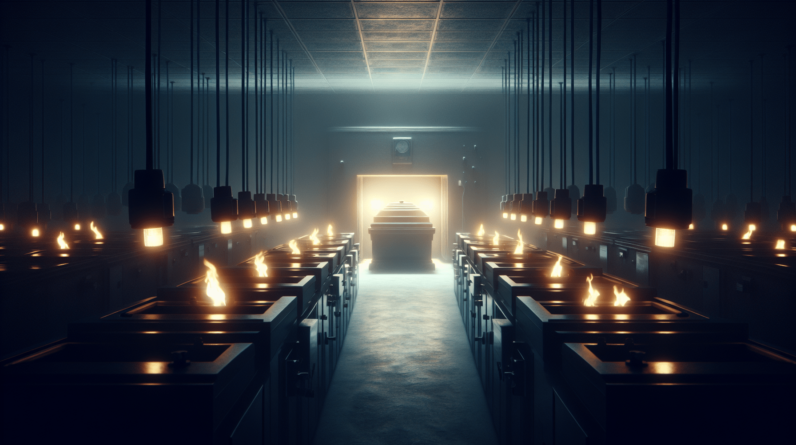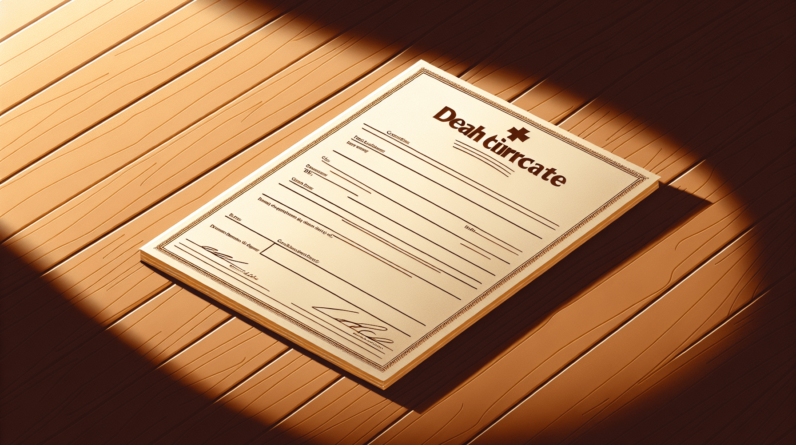
Have you ever wondered what is included in a basic cremation? It’s a topic that many people often overlook or aren’t familiar with. But fear not, as I am here to provide you with all the necessary information. From my research, I have discovered that a basic cremation typically includes the transfer of the deceased to the crematorium, the necessary paperwork and permits required for cremation, the cremation process itself, and the return of the cremated remains to the family. It’s a simplified and affordable option for those who prefer cremation as their end-of-life choice. So, if you have been contemplating this option or simply want to learn more, read on to find out everything you need to know about a basic cremation.
Transportation of the Body
Transfer from the place of death to the funeral home
When it comes to the transportation of a deceased loved one, the first step is often the transfer from the place of death to the funeral home. This crucial step is typically handled by a professional funeral director or a transport team. They exercise utmost care and respect while ensuring the safe and dignified transport of the body. The funeral home will have specialized vehicles equipped to handle this delicate task, ensuring that your loved one’s remains are transported with the proper protocols and procedures in place.
Transportation to the crematory
Once the necessary arrangements and paperwork have been completed at the funeral home, the next stage of transportation occurs, which involves transferring the deceased to the crematory. This transport is another vital step, and it is done in a manner that upholds the highest standards of professionalism and respect. The crematory will have specific guidelines and protocols in place to ensure a smooth and efficient process. Your loved one’s remains will be carefully transported to the designated facility, where the cremation process will take place.
Preparation of the Body
Refrigeration or embalming
After the transportation of the body to the funeral home, there are several options available for the preparation of the deceased. Depending on your preferences and specific circumstances, refrigeration or embalming may be recommended. Refrigeration helps to preserve the body temporarily, providing additional time for family and friends to make necessary arrangements before the cremation takes place. Embalming, on the other hand, involves the use of chemicals to temporarily halt the natural decay process and restore the appearance of the deceased. Funeral professionals will guide you through these options and help determine the most suitable choice for your situation.
Dressing and grooming the deceased
One of the ways to honor and remember your loved one is through the process of dressing and grooming. Funeral professionals understand the importance of presenting the deceased in a manner that reflects their personality, dignity, and the memories you hold dear. They will work closely with you, ensuring that your loved one is clothed and groomed in a way that holds significance and brings comfort to you and others attending memorial services or viewings. This personal touch allows you to pay tribute to your loved one and create a lasting memory of their appearance.

Cremation Process
Cremation chamber or retort
The actual cremation process takes place within a specialized piece of equipment known as a cremation chamber or retort. This chamber is designed to provide a controlled environment where the deceased is respectfully and carefully placed. The chamber reaches extremely high temperatures, typically ranging from 1,400 to 1,800 degrees Fahrenheit. During this process, the deceased’s body is subjected to intense heat, transforming it into cremated remains, which are commonly referred to as ashes.
Identification of the deceased
Before the cremation process begins, it is essential to ensure the accurate identification of the deceased. Funeral homes and crematories have strict protocols in place to prevent any mix-ups or errors. These protocols involve meticulous tracking and documentation to ensure that the remains returned to the family are indeed those of the loved one. From barcode systems to unique identification tags, multiple layers of verification are in place to provide peace of mind during a time of grieving.
Casket or container for cremation
When it comes to cremation, there is usually flexibility regarding the type of container used. In most cases, a simple combustible container, such as a cremation casket or an alternative container made of cardboard or wood, is utilized during the cremation process. These containers are designed specifically for cremation and meet all necessary requirements to ensure a safe and legal process. Funeral professionals will guide you in selecting the appropriate container based on your preferences and any specific regulations that need to be followed.
Medical devices and implants removal
Before the cremation process begins, it is crucial to remove any medical devices or implants, such as pacemakers or artificial joints, that may pose a risk during the cremation process. These devices can explode under the extreme heat and potentially cause harm. Funeral professionals are well-versed in identifying and safely removing such devices, ensuring a safe and efficient cremation process.
Placement in the cremation chamber
Once all necessary preparations have been completed, including identification, removal of medical devices, and suitable container selection, the deceased will be reverently placed in the cremation chamber. Funeral professionals carry out this task with the utmost care and respect, ensuring that your loved one is positioned correctly for the cremation process. The chamber door is then securely closed, and the cremation process begins.
Cremation Documentation
Obtaining necessary permits and authorizations
In order to proceed with the cremation process, certain permits and authorizations must be obtained. Funeral professionals handle this aspect and ensure that all legal requirements are met. These permits may include a death certificate, cremation permit, and any necessary local or state authorizations. Funeral homes have the expertise to navigate the administrative procedures involved and will guide you through the necessary steps to obtain the required documentation.
Completion of required paperwork
Alongside the permits and authorizations, various paperwork needs to be completed. Funeral professionals will assist you in filling out the necessary forms, ensuring that every detail is accurately recorded. This paperwork typically covers personal information about the deceased, details regarding the cremation process, and any additional services or special requests. By organizing and completing this paperwork, funeral professionals aim to alleviate some of the administrative burden during an already challenging time.
Ashes and Remains
Collection and processing of ashes
Following the completion of the cremation process, the remains, often referred to as ashes, need to be collected and processed. Funeral professionals use specialized tools to ensure the careful collection and processing of the ashes. The ashes may be placed in a temporary container or transferred to an urn, depending on your preferences. Funeral homes have a range of options available, allowing you to choose a container that suits your needs and personal taste. They can also guide you through additional choices, such as personalized engraving or other memorialization options.
Storage options for the remains
After the ashes have been collected and processed, you will need to consider where and how you would like to store them. Funeral homes typically offer various storage options, including traditional urns, decorative containers, or even jewelry pieces designed to hold a small portion of the ashes. From beautifully crafted urns to unique keepsakes, funeral professionals can help you find a storage option that aligns with your preferences and ensures a respectful resting place for the remains.
Disposition choices for the ashes
When it comes to the disposition of the ashes, there are several choices available. Some families opt for burial in a cemetery or a dedicated cremation garden, while others choose to scatter the ashes at a meaningful location. Funeral professionals can provide guidance on local regulations and offer suggestions for suitable scattering locations. Additionally, there are options to keep the ashes at home or place them in a columbarium, providing a peaceful and accessible space for remembrance and reflection.
Return of ashes to the family
After the ashes have been processed and stored according to your wishes, funeral homes offer the option to return the ashes to the family. This allows you to have a physical connection to your loved one and provides flexibility in terms of memorialization. Funeral professionals can arrange for the safe and respectful return of the ashes, ensuring that you have the opportunity to create a memorial or pay tribute in a manner that holds personal significance.
Alternative Arrangements
No-frills or basic cremation package options
For those seeking a more simplified approach to cremation, funeral homes often offer no-frills or basic cremation package options. These packages focus on the essentials, providing the necessary services and procedures without additional frills or complexities. While the specific inclusions may vary, basic cremation packages generally cover transportation of the body, necessary permits and authorizations, and the cremation process itself. This streamlined approach allows individuals to honor their loved ones in a simple yet dignified manner, while also offering potential cost savings.
Customizations and additional services available
While basic cremation packages provide a simplified option, funeral homes understand that many individuals desire additional customization and personalization. Funeral professionals are adept at tailoring services to meet specific needs and preferences. Whether it’s arranging a memorial service, incorporating religious or cultural traditions, selecting a unique urn, or inviting a celebrant to officiate the ceremony, funeral homes can help design a meaningful and personalized farewell for your loved one. They take into account your wishes and strive to create a memorable tribute that reflects the life and personality of the deceased.






